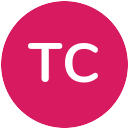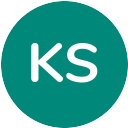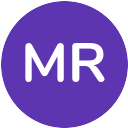The Top 7 Alternatives to PowerApps for Businesses
By Gregor K. published about 2023-01-22 20:38:40
With the prevalence of digital tools and applications in the modern world, it can be difficult to choose the best one for your business. PowerApps is a highly popular application that helps businesses create custom apps quickly and easily, but if you're looking for something a little different, there are plenty of alternative websites that offer similar features. Here is a list of some of the top websites like PowerApps that you can use to develop custom apps.
PowerApps
PowerApps is a powerful service from Microsoft that helps organizations to easily develop custom applications without the need for coding. It provides tools to create, customize, and deploy apps in minutes, making it ideal for organizations of any size.
Features
- Easy to use tools for creating custom applications in minutes
- Secure cloud-storage for data
- Automatically sync data across multiple devices
- Create custom forms and templates
- Connect to data sources and APIs
Table of Contents
- 1Introduction
- 2PowerApps Alternatives
-
3Head-to-Head Comparisons
- 3.1PowerApps vs Airtable
- 3.2PowerApps vs Start
- 3.3PowerApps vs Group
- 3.4PowerApps vs SharePoint
- 3.5PowerApps vs Patch
- 3.6PowerApps vs Django
- 3.7PowerApps vs Gallery
- 3.8PowerApps vs Download
- 3.9PowerApps vs Microsoft Excel
- 3.10PowerApps vs Google
- 3.11PowerApps vs Java
- 3.12PowerApps vs Canvas
- 3.13PowerApps vs OutSystems
- 3.14PowerApps vs Today
- 3.15PowerApps vs Free
- 3.16PowerApps vs Value
- 3.17PowerApps vs Salesforce
- 3.18PowerApps vs Smartsheet
- 3.19PowerApps vs Search
- 3.20PowerApps vs UiPath
- 4PowerApps History
- 5PowerApps Status
- 6Comments
- 7Further Links
PowerApps Alternatives
Microsoft Flow
Both PowerApps and Microsoft Flow are Microsoft products, used to create custom apps and automated workflows.
PowerApps allows users to create custom user interfaces and connect to data sources, while Microsoft Flow focuses on automating tasks and processes.
AppSheet
Both PowerApps and AppSheet are cloud-based app-building platforms used to create custom business applications.
PowerApps provides a graphical interface for quickly building applications, while AppSheet provides a more traditional coding environment.
Kintone
Both PowerApps and Kintone are cloud-based enterprise app-building platforms.
PowerApps provides a graphical user interface for quickly building applications, while Kintone provides a more traditional coding environment.
Zoho Creator
Both PowerApps and Zoho Creator are cloud-based app-building platforms used to create custom business applications.
PowerApps provides a graphical user interface for quickly building applications, while Zoho Creator provides a more traditional coding environment.
OutSystems
Both PowerApps and OutSystems are cloud-based app-building platforms used to create custom business applications.
PowerApps provides a graphical user interface for quickly building applications, while OutSystems provides a more traditional coding environment.
Mendix
Both PowerApps and Mendix are cloud-based app-building platforms used to create custom business applications.
PowerApps provides a graphical user interface for quickly building applications, while Mendix provides a more traditional coding environment.
Appian
Both PowerApps and Appian are cloud-based app-building platforms used to create custom business applications.
PowerApps provides a graphical user interface for quickly building applications, while Appian provides a more traditional coding environment.
Airtable
Both PowerApps and Airtable are web-based platforms used to create custom applications.
PowerApps is focused on developing business applications, while Airtable is more geared towards creating databases.
Start
Both websites are designed to help users create mobile applications.
PowerApps is a Microsoft product specifically designed to create business applications, while Start is more of a do-it-yourself website building platform.
Group
Both PowerApps and Group allow users to create, share and collaborate online.
PowerApps offers an easy-to-use drag-and-drop platform to quickly create mobile and web apps while Group is a suite of collaboration tools including messaging, document sharing, file storage, and notes.
SharePoint
Both PowerApps and SharePoint are Microsoft products that facilitate collaboration between teams.
PowerApps helps users create custom mobile applications without needing to code, whereas SharePoint stores and organizes documents and other content in a centralized hub.
Patch
Both PowerApps and Patch are websites used to create and develop web based applications.
PowerApps is a platform that uses low-code development methods to create custom apps while Patch is a web-based patching system used to secure vulnerability in software.
Django
Both PowerApps and Django are web frameworks used to build applications.
PowerApps is a low-code platform designed to quickly create mobile apps while Django is an open-source high-level Python web framework designed for faster development of secure and maintainable websites.
Gallery
Both PowerApps and Gallery are websites that help users create mobile applications.
PowerApps is a website designed to allow users to create business applications, while Gallery is a website designed to showcase existing apps created by the Microsoft community.
PowerApps Head-To-Head
PowerApps can be an incredibly useful tool for businesses and organizations of all sizes. It allows users to quickly create custom business solutions through the drag-and-drop interface. However, there are other websites available that may offer similar features and capabilities. In this article, we will compare PowerApps with several other popular websites to determine which one is the best option for your business needs. We will look at factors such as customization options, cost efficiency, ease of use, and customer service options to get a better understanding of how each platform performs in comparison to the others. We hope this will help you make an informed decision about which platform is the best fit for your project requirements.
PowerApps and Airtable are two popular websites that provide users with tools to create custom applications and databases. PowerApps is a Microsoft product that enables users to quickly build custom business solutions for mobile devices, desktop browsers, and web applications. It also integrates with existing data sources such as Excel, Office 365, Dynamics 365, SharePoint, Dropbox, SQL Server, and more. Airtable is an online database tool that lets users store information in tables and forms so they can manage it better. Airtable offers both relational database features like search and sorting as well as advanced features like automation and collaboration capabilities. Both platforms provide user-friendly drag-and-drop interfaces that make creating apps and databases simple. PowerApps offers more flexibility when it comes to connecting data sources while Airtable allows users to organize their data into different views or âbasesâ using a customizable formula language called âAirdataâ. Additionally, both products offer in-depth reporting features allowing users to track their progress easily and make better decisions.
PowerApps and Start are both online platforms that allow users to quickly create apps without needing coding experience. PowerApps is tailored more towards those who want to create business-focused applications, while Start provides an easy-to-use platform for creating web apps for various types of organizations. PowerApps offers a wide range of features including the ability to customize app designs, integration with Microsoft's Azure cloud, and access to multiple data sources. It also allows users to connect with existing business systems such as Office 365 and Dynamics 365. Start, on the other hand, is simpler and requires no coding knowledge in order to create an app. It also allows users to easily connect external services such as databases, CMSs and APIs for advanced functionality. Both platforms have drag-and-drop user interface builders which allow users to design their app quickly and easily. In terms of deployment options, PowerApps has support for multiple platforms such as iOS, Android, Windows 10 and even MacOS devices, while Start only supports web based deployment options. Additionally, PowerApps comes with a built-in analytics engine which allows users to track usage metrics and performance metrics of their apps in real time. Start does not offer this feature at the time of writing this article. Finally, PowerApps offers extensive security features including authentication using various providers such as OAuth 2 or multi factor authentication (MFA).
PowerApps and Group are both web-based software solutions that enable businesses to create custom applications for their unique needs. Both products offer drag-and-drop design tools for creating professional-looking apps quickly, without the need for coding knowledge. Additionally, PowerApps and Group both provide users with the ability to integrate data sources, connect existing applications, and turn complex processes into intuitive user experiences. PowerApps provides a mobile app development platform with support for cross-platform deployment of apps on multiple devices. This allows users to create powerful mobile-ready applications quickly, without needing specialized programming skills. Group provides a similar solution, but focuses more on building web apps using HTML5 and Javascript. Additionally, Group supports integrations with popular third-party services like Salesforce and Slack for easy collaboration across teams. In terms of data storage, PowerApps offers industry standard SQL databases as well as cloud storage options like Microsoft Azure or Amazon Web Services for secure hosting of data. On the other hand, Groupâs serverless architecture means that all data is stored securely in the cloud and managed by the platform itself. This makes it easier to scale and manage large amounts of data while keeping costs low. Overall, PowerApps and Group offer a range of features that can help businesses build custom applications quickly and easily â regardless of their level of programming experience or budget size.
PowerApps and Patch are both websites that offer cloud-based solutions to help businesses create, manage, and deploy apps. PowerApps offers a flexible platform to build custom business apps that are tailored to the specific needs of the organization. It also allows users to rapidly develop and test prototypes by leveraging existing cloud services like Microsoft Azure, Office 365, and Dynamics 365. Patch provides an automated way for developers to update their applications with features that improve usability and security on a regular basis. It supports multiple languages including JavaScript, Python, PHP, HTML/CSS, C#, Java/J2EE and more. Both solutions provide APIs for easy integration into existing systems and secure data management. Both websites also offer monitoring capabilities through detailed logs and analytics capabilities. Powerapps offers an intuitive drag-and-drop interface while Patch has a more traditional coding workflow. Additionally, PowerApps is designed specifically for mobile app development while Patch is geared more towards web application development.
PowerApps and Django are both powerful web development frameworks with a range of features for creating sophisticated applications. PowerApps is a Microsoft-backed low-code platform for building custom business applications quickly and without coding. It provides ready-made templates to help users create their own apps, as well as integration with other Microsoft technologies such as Office 365 and Dynamics 365. On the other hand, Django is an open source web framework that allows users to rapidly develop complex, database-driven sites and apps. It has robust features such as automated admin interfaces, built-in security options and scalability across multiple platforms. PowerApps is great for businesses looking to build simple but effective applications quickly, while Django's level of customization makes it ideal for more advanced projects.
PowerApps and Gallery are both web-based services offering powerful tools to create, deploy, and manage apps. PowerApps allows users to build applications using a simple drag-and-drop interface, while Gallery provides an integrated platform for app developers to host their creations and make them available for download or purchase. PowerApps features a range of customizable templates and components that allow users to quickly create robust applications without coding knowledge. It also offers integration with existing business systems, making it easy to implement data controls, authentication systems, and more. In addition, PowerApps comes with a range of analytics and reporting capabilities so users can track the performance of their apps. Meanwhile, Gallery is designed for app developers who want to publish their work in an online store. The service provides detailed analytics about downloads and sales as well as user feedback on each app in the form of reviews and ratings. Furthermore, developers can customize pricing models according to their needs by setting prices per download or offering subscription plans.
PowerApps and Download are both websites designed to help users with their business operations. PowerApps is an online platform that allows users to create and share applications, while Download helps users find, manage, and share digital content. PowerApps provides businesses with the ability to quickly develop custom applications without having to write code. Users can access hundreds of templates to get started, or they can use the drag-and-drop feature to build their own apps from scratch. The platform also includes data-driven tools for analytics and insights, as well as integration options for other services and platforms. Download is a digital content management platform that helps businesses organize their files and documents in one place. It provides users with a secure cloud storage space where they can store and share files with colleagues or customers. The platform also supports collaboration tools so teams can work together on projects in real time. Additionally, it offers security features like two-factor authentication and encryption for added protection of sensitive data. Overall, PowerApps is an ideal solution for businesses looking to create custom applications without writing code, while Download is best suited for those needing a secure document storage and sharing system.
PowerApps and Microsoft Excel are both powerful tools used to create custom apps and spreadsheets, respectively. PowerApps enables users to create custom forms and applications with no coding experience required. It offers templates to help the user get started quickly, and allows collaboration among multiple users. With PowerApps, users can access data from a variety of sources such as SharePoint, Dynamics 365, SQL Server, and more. Microsoft Excel is a well-known spreadsheet program that allows users to organize their data with features like pivot tables, charts, formulas and macros. Users can also collaborate on spreadsheets in real-time as well as access them through the web or mobile device. While PowerApps is focused on creating custom apps from existing data sources, Microsoft Excel is used for manipulating and analyzing data stored in spreadsheets. Both tools have many compatible features that enable the user to quickly build personalized solutions from templates or from scratch.
PowerApps and Google both provide users with a suite of tools that enable them to create, collaborate, and share applications and documents. PowerApps is a cloud-based platform that allows users to quickly build mobile apps without coding experience. It provides an intuitive drag-and-drop user interface, a library of prebuilt templates, connectivity to hundreds of data sources, and a range of customizing options. Google offers users the ability to create, store, and share documents with its suite of apps â including Docs, Sheets, Slides, Sites & Forms. It also features robust collaboration tools such as real-time editing and commenting capabilities to ensure a seamless workflow. Both solutions offer secure storage solutions for files/applications and allow for easy integration with other services or applications. However, one key difference between the two platforms is that PowerApps focuses mainly on developing custom apps for businesses while Google is more geared towards creating documents.
PowerApps and Java are both development tools that enable developers to create applications quickly and easily. PowerApps is a low-code platform that provides a library of components and templates, allowing users to create custom applications without coding. Java is an object-oriented programming language that can be used to develop stand-alone programs as well as web-based applications. In terms of ease of use, PowerApps requires less effort for creating custom applications due its low-code library and drag-and-drop capabilities. With Java, users must have more technical knowledge to write code or work with the API libraries to develop their application. When it comes to scalability, PowerApps offers the ability to scale up an application across various devices and platforms in order to meet changing user needs. Java also supports scalability by offering features such as dynamic loading and multiple threads which allows users to extend their application beyond one machine or device. For security purposes, both PowerApps and Java offer secure development capabilities. In PowerApps, applications are secured using Azure Active Directory authentication which protects against data leakage or unauthorized access. Java also uses encryption algorithms such as RSA or hash functions like SHA-256 for authentication and authorization of data in order to ensure its security. Overall, both PowerApps and Java provide developers with quick development solutions for creating custom applications based on their specific requirements.
PowerApps and Canvas are both powerful platforms for creating custom applications. Both platforms offer features that make it easy for users to create engaging experiences for their customers and employees. PowerApps is an enterprise-grade app development platform used to build business solutions. It features a drag-and-drop interface with an abundance of customizable templates, design tools, and cloud integration capabilities. PowerApps also offers a wide range of connectors to popular third-party services and data sources so users can easily integrate external data into their apps. Canvas is a web-based application development platform that makes it easy to create powerful applications quickly. With its rich library of components, Canvas allows developers to rapidly develop user interfaces with minimal coding knowledge. It also offers various options for integrating external data sources and services, including Salesforce, AWS, Microsoft Azure, Google Cloud Platform, and more. Additionally, Canvas includes several customization options such as responsive design and reusable components so developers can create unique solutions tailored to the needs of their organization.
PowerApps and OutSystems are two powerful online platforms used by organizations to develop mobile and web applications. Both allow developers to quickly create apps with minimal coding, but they differ in the types of applications they allow you to create. PowerApps is tailored towards creating data-driven business applications. It is built on Azure cloud technology and allows developers to create apps that can be easily updated or audited in the future. It also has a wide range of app templates that make development quick and easy. OutSystems offers a more comprehensive approach to development, allowing developers to build both data-driven and process-driven applications. It uses its own Platform as a Service (PaaS) architecture for development, which allows for more complex features such as integration with existing systems, analytics capabilities, and scalability options. It also includes a drag-and-drop visual programming language for faster development cycles. When deciding between PowerApps and OutSystems, itâs important to think about what type of application you want to develop and how much control you need over the entire process. For example, if you need an app that integrates with existing systems or requires complex analytics capabilities, OutSystems would be the better choice due to its PaaS architecture and visual programming language. If youâre looking for something simpler that focuses on data management, then PowerApps may be your best bet due to its wide selection of templates and robust cloud technology.
PowerApps is a low-code development platform that enables users to develop applications without writing any code. It provides a wide range of features, including drag-and-drop building blocks, pre-built templates, an integrated data platform, and AI capabilities. PowerApps also supports integration with popular third-party services such as Office 365, Dynamics 365, and Azure. Today is an all-in-one software platform for creating and managing digital experiences. It includes content management capabilities, marketing tools, analytics and insights, eCommerce functionality, and customer service features. Today also offers advanced automation capabilities to help streamline processes and reduce manual tasks. Additionally, it integrates with popular third-party services such as Salesforce, Google Ads, Shopify, Zapier, and Mailchimp.
PowerApps and Free are two websites that provide users with the ability to create mobile apps. Both offer a drag-and-drop design platform for creating apps, though PowerApps is more sophisticated and offers more features than Free. PowerApps enables users to leverage their existing data from SharePoint, SQL Server, Dynamics 365, Excel, OneDrive and other sources to quickly build business apps. It also offers reusable components as well as a large library of application templates that can be used to jumpstart app creation. In addition, PowerApps provides advanced integration capabilities with its Flow feature for extending the functionality of the app. On the other hand, Free is simple and intuitive to use with an easy-to-use app builder tool. With Free you can customize your app's look and feel without any coding knowledge and it also allows users to integrate features like social media logins or a shopping cart. However, it lacks some of the advanced features offered by PowerApps such as integration with third party services or complex logic capabilities.
PowerApps and Value are both cloud-based, low-code platforms that enable users to build applications without code. With PowerApps, users can create custom apps for specific business needs by connecting to existing data sources such as Excel, SharePoint and Dynamics 365. They can also use the platform to extend their existing line of business apps with a simple drag and drop UI, embed visuals from Power BI, or create custom components in JavaScript. Value offers a more comprehensive suite of tools with features such as an AI-powered visual designer, automatic data synchronization across multiple databases, integration with third party services like Salesforce and Slack, and the ability to customize based on user preferences. Both platforms offer advanced security features such as role-based access control and encryption at rest. In terms of scalability, PowerApps has no limits on the number of users or objects while Value has a pay-as-you-go pricing model that allows for unlimited users and objects.
PowerApps and Salesforce are both cloud-based software platforms that allow users to create and manage business applications. PowerApps focuses on creating customized apps for mobile devices, making it ideal for organizations that need to quickly develop and deploy mobile applications. Salesforce, on the other hand, is a comprehensive customer relationship management (CRM) platform that helps organizations store, manage, and analyze customer data. PowerApps provides an easy-to-use drag-and-drop interface for quickly building custom apps with no coding required. It also allows users to automate workflows across multiple services such as Microsoft Dynamics 365, Office 365, Dropbox, OneDrive and more. In addition, it offers a range of templates, connectors, and visual tools so users can quickly design and publish powerful applications without needing to write code. Salesforce offers a wide range of tools for managing customer relationships including sales automation, service desk automation, marketing automation and analytics. It is designed to provide customers with insights into their business operations by allowing them to track customer data from any source in real time. It also provides features like customer segmentation, automated campaigns and AI-driven analytics which help users better understand their customersâ needs and preferences so they can provide better service. Overall, PowerApps is the ideal choice for organizations looking for a quick solution for developing mobile apps while Salesforce is suited best for those who need more comprehensive customer relationship management tools.
PowerApps and Smartsheet are both online tools used to help businesses build custom applications and streamline processes. PowerApps is an easy-to-use platform that allows non-developers to quickly create applications for a variety of mobile, web, and desktop devices without the need for coding. With its drag-and-drop interface, users can easily customize templates or create new apps from scratch using visual editors. It also offers powerful integration capabilities with other Microsoft products such as Office 365, Dynamics 365, and Azure. In addition, users can access data from multiple sources including on-premise databases and cloud services such as Azure SQL Database, SharePoint Online, Dynamics 365 and more. Smartsheet is designed for collaboration and task tracking with features like Gantt charts, automated workflows, custom reports and dashboards. It allows users to create projects with flexible tasks that can be shared with colleagues or clients who have access to the same documents in real time. Additionally, it provides integration capabilities with cloud services such as Google Drive, Dropbox, Box and OneDrive so that all files are accessible from one place. Smartsheet enables users to generate simple reports using its built-in reporting engine or enhance them using external visualization tools like Tableau or Power BI. Moreover, its robust set of APIs gives developers the ability to extend its features even further beyond what is natively available.
PowerApps and Search are two websites that offer different solutions for creating and managing applications. PowerApps is a platform for building custom business applications with an easy-to-use visual interface, while Search provides an enterprise-grade search engine for indexing, searching and providing access to data. PowerApps enables users to create apps that connect to multiple data sources with drag-and-drop functionality, allowing them to build custom apps without writing code. It also offers a range of templates and connectors for popular services like Dynamics 365 and SharePoint. In addition, it provides integration with Power BI and other Microsoft services like Office 365. Search provides an enterprise-grade search engine that can be used to index, search and provide access to data from a variety of sources including databases, webpages, documents and images. It offers features such as intelligent indexing capabilities, natural language processing (NLP) capabilities, real-time analytics dashboards as well as automated workflows for content management. It also provides integration with existing systems such as Salesforce and Dynamics 365.
PowerApps and UiPath are both web-based tools used to create automation applications. PowerApps is a powerful cloud-based app building platform that enables users to quickly and easily create custom business solutions. It includes many features such as an intuitive drag-and-drop user interface, out of the box connectors to popular services like Office 365, Dynamics 365, SharePoint, and more, and the ability to add custom code when needed. UiPath is a robotic process automation (RPA) solution designed to help businesses automate tedious manual tasks. It offers features such as drag & drop visual programming for creating workflows, reusable components for faster development, integration with AI and machine learning capabilities, enterprise scalability, and collaborative development. Both products offer powerful solutions for businesses looking to automate their processes; however UiPath may be better suited for organizations looking for more complex automations.
History of PowerApps
PowerApps is a web-based service that provides users with the ability to create custom applications without the need to write code. It was developed by Microsoft and initially released in 2016, allowing users to quickly create applications using existing data sources, templates, and drag and drop tools. The service has since been continually updated and improved, making it easier for users to create and manage their applications.
PowerApps Status
The PowerApps website on online and reachable (last checked on 2024-04-23 01:00:44).
Comments
-

-

I'm sure these websites are all great, but I'm not sure if I'm ready to give up my PowerNap just yet!
2023-07-23 15:56:25 · -

I've heard of PowerApps, but these other websites sound like something from a dream!
2023-08-17 06:40:29 · -

-

-

If there's anything more boring than PowerApps, it's the other similar websites on this list!
2024-02-13 21:41:38 ·
Further Links
Trending Sites
Top Sites in Web Applications
PowerApps
PowerApps is a powerful service from Microsoft that helps organizations to easily develop custom applications without the need for coding. It provides tools to create, customize, and deploy apps in minutes, making it ideal for organizations of any size.
Features
- Easy to use tools for creating custom applications in minutes
- Secure cloud-storage for data
- Automatically sync data across multiple devices
- Create custom forms and templates
- Connect to data sources and APIs
Table of Contents
- 1Introduction
- 2PowerApps Alternatives
-
3Head-to-Head Comparisons
- 3.1PowerApps vs Airtable
- 3.2PowerApps vs Start
- 3.3PowerApps vs Group
- 3.4PowerApps vs SharePoint
- 3.5PowerApps vs Patch
- 3.6PowerApps vs Django
- 3.7PowerApps vs Gallery
- 3.8PowerApps vs Download
- 3.9PowerApps vs Microsoft Excel
- 3.10PowerApps vs Google
- 3.11PowerApps vs Java
- 3.12PowerApps vs Canvas
- 3.13PowerApps vs OutSystems
- 3.14PowerApps vs Today
- 3.15PowerApps vs Free
- 3.16PowerApps vs Value
- 3.17PowerApps vs Salesforce
- 3.18PowerApps vs Smartsheet
- 3.19PowerApps vs Search
- 3.20PowerApps vs UiPath
- 4PowerApps History
- 5PowerApps Status
- 6Comments
- 7Further Links
